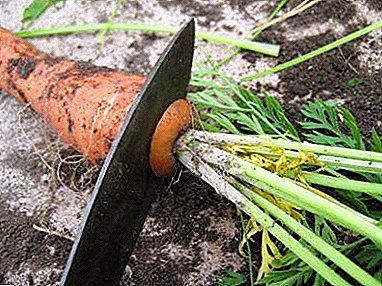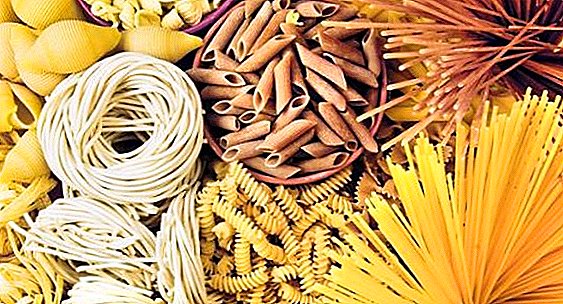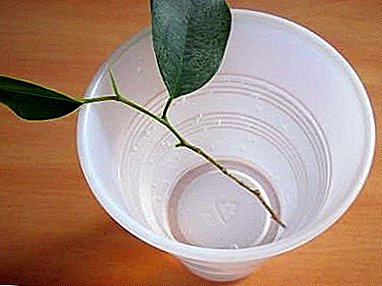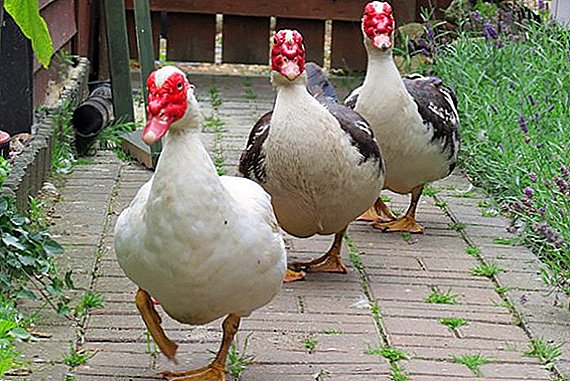
Carrots belong to the roots, which are most difficult to store during the winter. She is very capricious and whimsical to external conditions. Fruits often appear rotting fungus, because of which you can not save the crop.
What to do to keep the root fresh and tasty until next season? Is the sand wet or dry for this? Under what conditions and temperature do carrots need to be stored in the sand?
Answers to these questions will be discussed in detail in our article. We also recommend to watch a useful and interesting video on this topic.
What is this plant?
Carrots are a biennial plant that forms a rosette of leaves and root crop in the first year of life, in the second year of life it is a seed bush and seeds. It is distributed everywhere, including in the Mediterranean countries. Both the root crops themselves (as food) and the seeds from which the infusion and extracts are made are used.
Beneficial features
Carrots are very rich in vitamins and trace elements.. The content of some of them surpasses other vegetables, milk and even meat.
It contains:
- B vitamins;
- vitamin C;
- carotenoids;
- flavonoids;
- anthocyanidins;
- fatty oil;
- essential oil.
 The benefits of carrots do not decrease after heat treatment.on the contrary, new unique properties appear in it. The amount of lipids, proteins and dietary fibers decreases during preparation. It facilitates the work of the body during digestion. B vitamins and carotenoids remain in the same amount. With regular use of boiled vegetables, intestinal function and immune system improves.
The benefits of carrots do not decrease after heat treatment.on the contrary, new unique properties appear in it. The amount of lipids, proteins and dietary fibers decreases during preparation. It facilitates the work of the body during digestion. B vitamins and carotenoids remain in the same amount. With regular use of boiled vegetables, intestinal function and immune system improves.
Raw carrots are low in calories, which makes them indispensable for various diets. To maintain good vision, you need to eat 200 grams of carrots daily.
Suitability for long storage
Unfortunately, many gardeners, this vegetable has a very thin and delicate skin. The root crop begins to deteriorate and rot at the slightest violation of its integrity due to the ingestion of bacteria and fungi. One of the important rules of high-quality storage is the absence of damage on the peel and the choice of carrots of special, late-ripening and mid-season varieties.
Under unsuitable storage conditions, carrots will rot or germinate. To avoid crop loss, it is important to prepare a suitable room before laying the root crops. Some of the prerequisites are:
- preliminary removal of the old crop;
- disinfection of the storage room;
- whitewashing walls;
- ventilation.
The ideal temperature for storing carrots - from 0 to +3 degrees. Humidity is not higher than 96%. Only well-dried vegetables without tops and signs of spoilage are required to clean the basement or crates. At preservation of a tops of root crops moisture and vitamins are lost.
Fastest spoil all varieties with shortened roots.
Is it possible to save in a sandy environment in the basement or cellar?
 Storing carrots in the sand is one of the most popular ways among summer residents.which have free-standing basements, cool cellars and garage pits. The method is so common that rather, the question arises, how to keep the vegetable without sand? This method is popular because of the ability of the sandy environment to reduce the evaporation of moisture from carrots, thereby preventing the development of rot.
Storing carrots in the sand is one of the most popular ways among summer residents.which have free-standing basements, cool cellars and garage pits. The method is so common that rather, the question arises, how to keep the vegetable without sand? This method is popular because of the ability of the sandy environment to reduce the evaporation of moisture from carrots, thereby preventing the development of rot.
It also provides a constant temperature, which contributes to the excellent preservation of root crops. Therefore, the use of sand is not only possible, but necessary, if you want to enjoy a rich harvest of healthy roots throughout the winter.
What should be: dry or wet?
What sand is needed and better suited for storage in the cellar - dry or wet? Can we hope that in a wet carrot will lie until spring?
Of course, it is better to wet the sandy storage medium.. This will preserve the juiciness of the vegetable for a long period. It also helps to maintain the optimum temperature.
Advantages and disadvantages
Among the features of this method should be emphasized that the sand should not be too wet. You can check it by squeezing it in your hand - water should not flow from it and it should not crumble. As the sand dries, the sand layer is slightly moistened.
Indisputable advantages of using sand are:
- "Warming" carrots with a cold cellar, or cooling with the penetration of large amounts of warm air.
- Pulling off moisture is not self, in order to avoid the formation of rot.
- Long retention period - from 6 to 8 months.
The disadvantages include the need to thoroughly wash the roots before using. There are also quite significant time and effort.
Training
To use this method of laying root crops for the winter, it will be necessary to acquire suitable containers and water. For these purposes, suitable wooden containers, boxes, with a capacity of 15-17 kg or ordinary buckets. The volume of water depends on the amount of the harvest: for 1 box - 1.5-2 liters, for 1 bucket - 1 liter.
Only clay sand is suitable for this storage method.. River is better not to use at all.
How to save a vegetable?
For better preservation of root crops, one should adhere to the following points:
 Before removing carrots for storage, it must be dried in the shade, holding it in air for 2-3 days.
Before removing carrots for storage, it must be dried in the shade, holding it in air for 2-3 days.- The tops need to be cut flush with the head, in order to avoid germination.
- For storage it is necessary to choose fruits of medium and large size, without damage and cracks.
- It is important not to deposit carrots with any flaws. The spoiled root crop is better to be let in the first place for pickling cabbage or food.
- When stored in a box, the bottom must be covered with cellophane or any film. In it, pre-make several holes for air intake.
- Cover the bottom of the box with a layer of sand of 2-3 centimeters.
- Put the carrots in such a way that the roots do not touch each other. This is important because the carrot must breathe.
- Top with a layer of sand about 10 centimeters.
- Alternate in this way until the tank volume is fully utilized.
- From above it is best to close the lid.
When stored in a bucket on the bottom it is better to fill in dry sand, a layer of about 10 centimeters.. Carrot sticking cut head up. From above fill up with already wet sand.
Watch the video about storing carrots in the sand:
Possible problems
Problems can arise if the culture was grown in a soil with a high content of nitrogen and organic fertilizers. It also adversely affects abundant watering, late cleaning - all this will affect the quality of carrot storage. Of the possible diseases, white and black rot can bring great harm to the fruit.
The main sign of infection:
- rotting tops;
- the appearance of dark spots and transverse stripes on the peel with the formation of voids beneath them.
For these reasons, the flesh becomes rotten and the carrot quickly deteriorates. The source of the disease is infected planting stock or an old crop in the basement..
It should be noted that the infection will spread faster at high humidity and elevated temperature in the basement or cellar. Rot develops foci and quickly moves from diseased root vegetables to healthy ones.
Important: It is necessary to notice the first signs in time and discard the infected fruit.
Conclusion
Storing carrots in a sandy environment is a time-tested technology with important features.. Sand actually negates the risk of the onset of rotting processes, maintains the optimum temperature, preserves the juiciness and taste of the fruit.
Subject to all recommendations, the roots will remain fresh for 6-8 months.


 Before removing carrots for storage, it must be dried in the shade, holding it in air for 2-3 days.
Before removing carrots for storage, it must be dried in the shade, holding it in air for 2-3 days.









